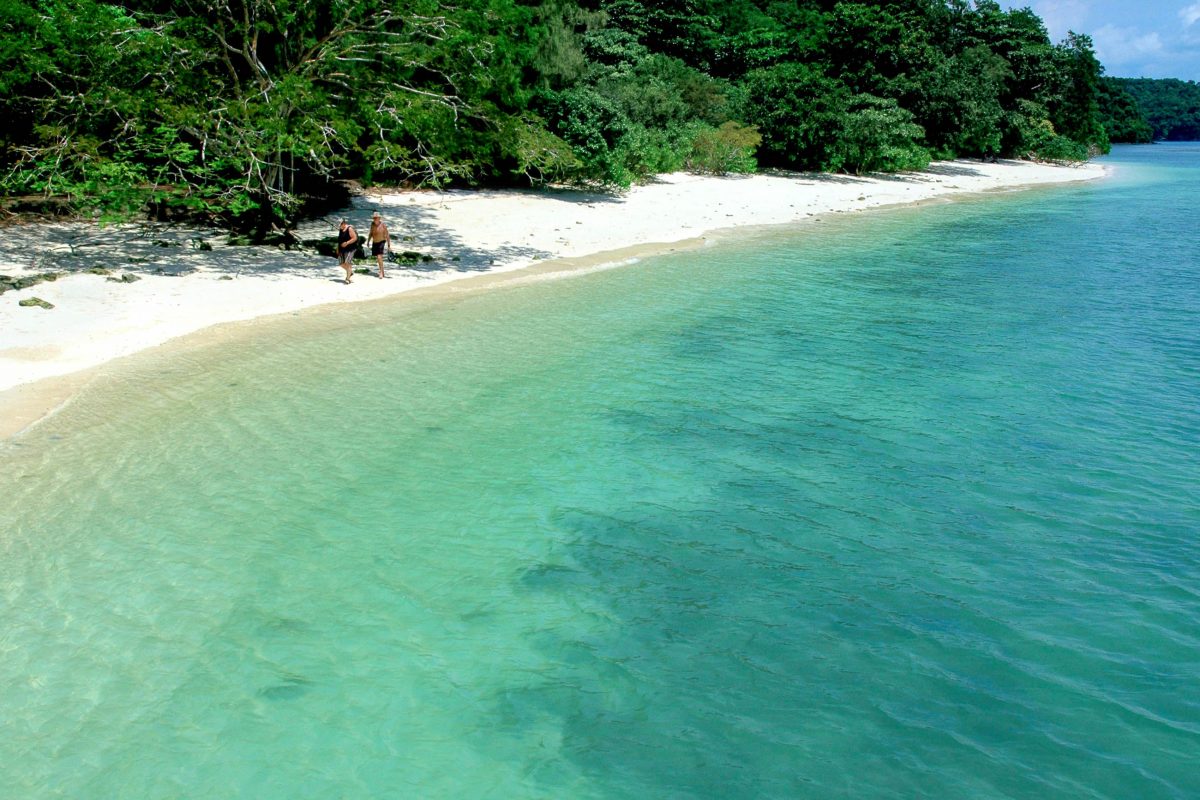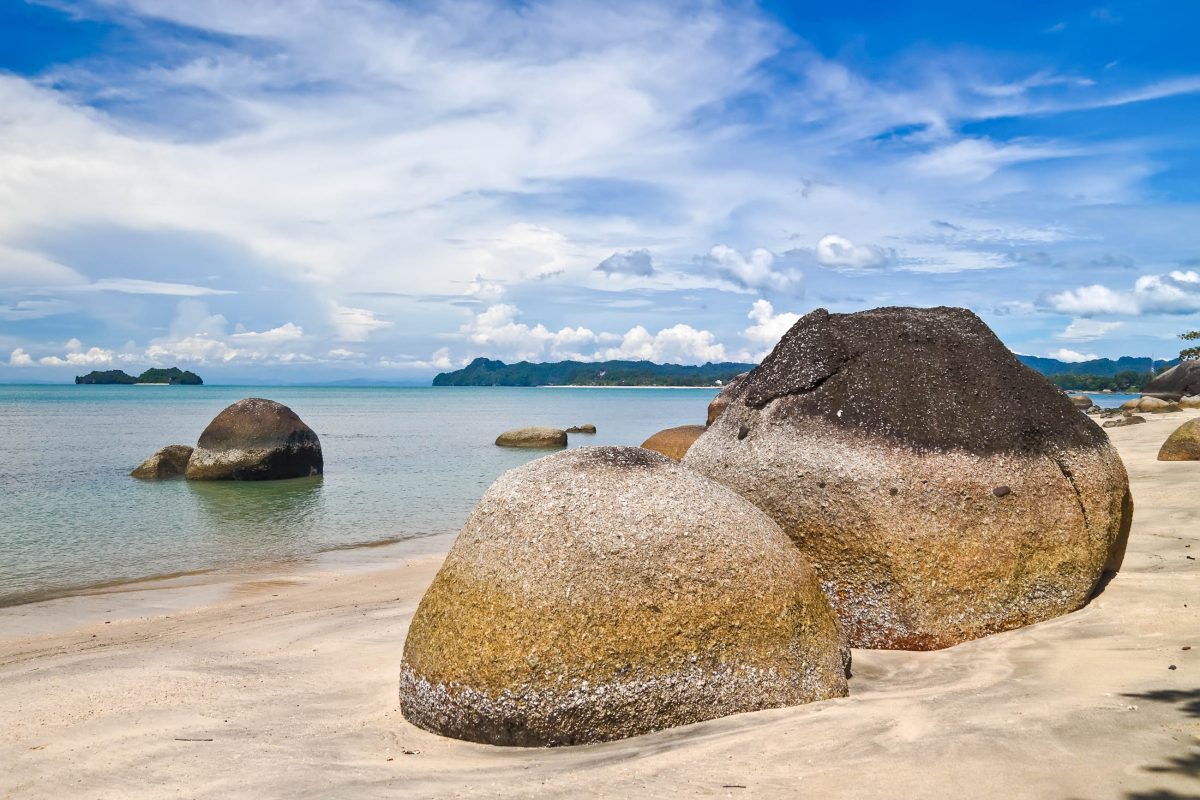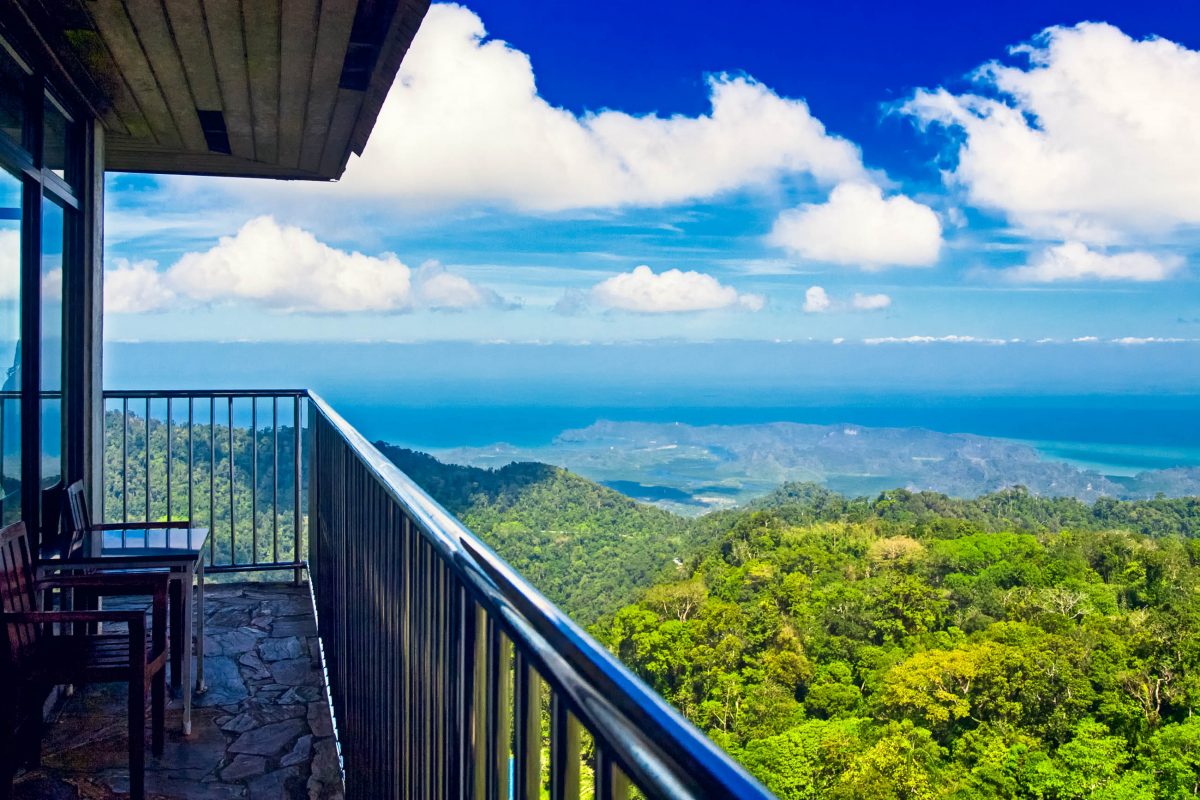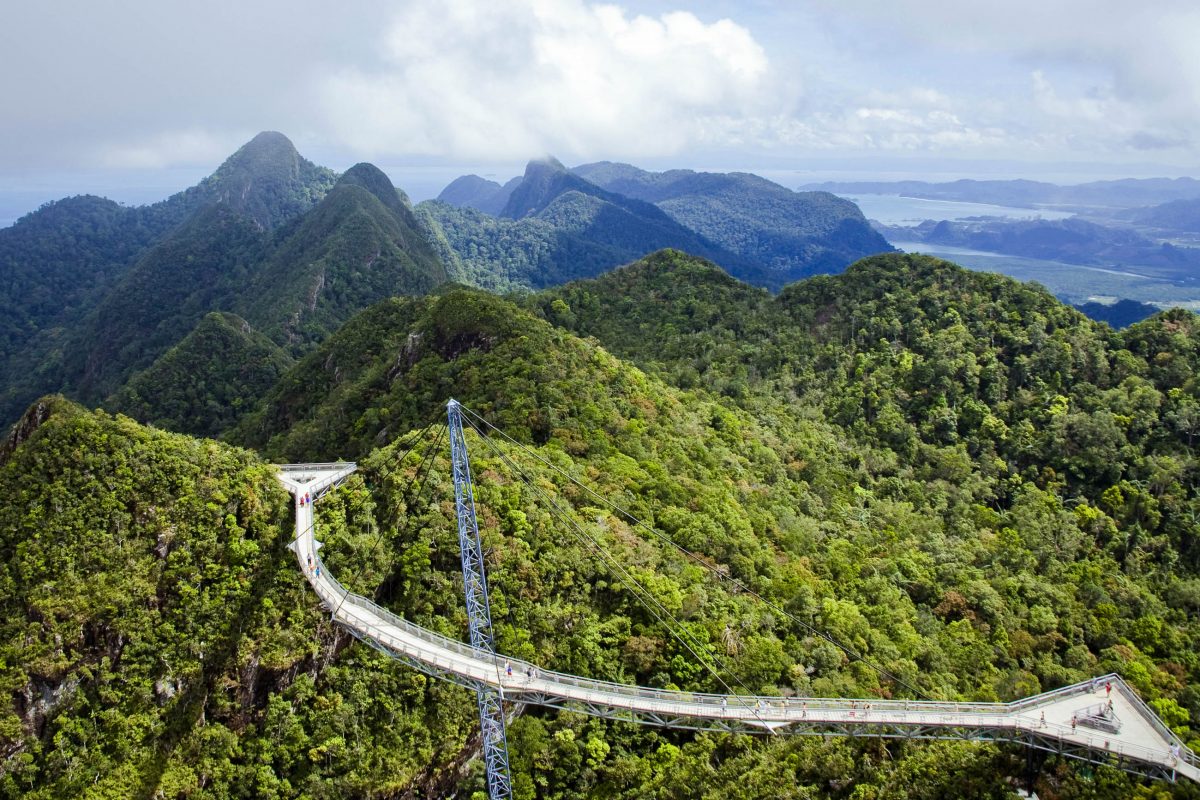Die beliebte Ferieninsel Langkawi im Zentrum von Malaysia bietet mit Stränden, Resorts, unberührtem Regenwald und fantastischen Aussichtspunkten inmitten atemberaubender Natur alles, was das gestresste Urlauberherz begehrt.
Die malaysische Insel Langkawi (Pulau Langkawi) im indischen Ozean ist die Hauptinsel der gleichnamigen Inselgruppe Langkawi und gehört zu unseren Top 10 Sehenswürdigkeiten von Malaysia. Im Gegensatz zur urbanisierten Nachbarinsel Pulau Penang hat Langkawi nichts von ihrer magischen Ursprünglichkeit verloren und ist das kleine Paradies in der Andamanensee geblieben, das es einst war.
Die Fläche von Langkawi beträgt 30 mal 25 Kilometer, die anderen rund 100 Kalksteininseln der Inselgruppe sind wesentlich kleiner und nur 2 weitere sind bewohnt. Den Hauptteil der Bevölkerung bilden die Bumiputras, daneben leben auch noch Chinesen, Inder und Thai auf Langkawi. An der Südküste haben sich Orang Laut („Menschen des Meeres“) angesiedelt.
Inhaltsverzeichnis
BILDER: Ferieninsel Langkawi
Beste Reisezeit für Langkawi
Durch das tropische Klima auf Langkawi fallen die Temperaturen so gut wie nie unter 20°C, das Wetter ist auf Langkawi ganzjährig heiß und feucht – die perfekten Bedingungen für tropischen Regenwald, der Langkawi nahezu zur Gänze bedeckt.
Dennoch gelten als beste Reisezeit für Langkawi dennoch die Monate Dezember bis März. Dann fällt so gut wie kein Regen und der Sonnenschein ist über Bade- und Tauch-Urlaub stets ungetrübt. Am meisten regnet es von August bis November und auch im April und Mai ist mit gelegentlichen Schauern zu rechnen.
Wie kommt man am besten nach Langkawi?
Langkawi ist von Kuala Lumpur und Singapur aus per Flugzeug über den Flughafen an der Westküste zu erreichen. Von Kuala Kedah, Kuala Perlis und dem thailändischen Satun aus gibt es regelmäßige Fähren in den Hauptort Kuah. Das Straßennetz auf Langkawi ist gut ausgebaut, möchte man den ganzen Tag mobil sein, mietet man sich am besten ein Moped oder vereinbart einen Tagespreis mit einem Taxifahrer.
Tipp: Langkawi ist eine Duty Free Zone, das heißt, es gibt keinen Zoll und keine Steuern, dadurch kann zum Beispiel Alkohol wesentlich billiger erstanden werden als im Rest von Malaysia. Aber Achtung: Bei der Einreise in Malaysia von Langkawi aus gelten die Zollbestimmungen sehr wohl.
Langkawi – die perfekte Urlaubsinsel

Von den Schäden des verheerenden Tsunami im Jahr 2004 hat sich Langkawi längst erholt und ist schon an sich eine eigene Sehenswürdigkeit. Die Insel erfüllt alle klimatischen und infrastrukturellen Voraussetzungen eines tropischen Urlaubsparadieses.
Das gesamte Eiland kann zu Fuß gut erkundet werden und bietet an jeder Ecke atemberaubende An- und Rundumblicke über die tropische Vegetation. Wer noch mehr Abgeschiedenheit als in den wilden Wäldern von Langkawi sucht, kann sich mit einem Boot auf eine der kleinen Nachbarinseln bringen lassen. Diese sind unbewohnt und warten mit absoluter Ruhe und Entspannung auf, bieten aber auch keinerlei Bequemlichkeiten wie Lokale oder Toiletten.
Hauptort von Langkawi ist Kuah im Südosten der Insel. Gleich an der Hafeneinfahrt werden Fähren und Yachten am Eagle Square von einer riesigen Adlerstatue begrüßt, ein Konterfei der majestätischen Raubvögel, die in großer Zahl über Langkawi kreisen.
Strände auf Langkawi

Langkawi ist weithin für seine wunderschönen Sandstrände bekannt. Selbst die Strände der größten Hotels sind so gut wie nie überfüllt. Am bekanntesten und beliebtesten sind die Strände an der Westküste. Pantai Cenang, Pantai Tengah und Pantai Kok bieten feinen Sand, Lokale und Resorts, wobei auf den ersten beiden am meisten los ist.
Als Taucherparadies ist Langkawi nicht unbedingt bekannt, wer klares Wasser und farbenprächtige Fischschwärme sucht, ist am besten im nahe gelegenen Pulau Payar Marine Park aufgehoben.
Die höchsten Berge Langkawis

Die höchste Erhebung von Langkawi ist der 890m hohe Gunung Raya im Zentrum der Insel. Über eine gut befahrbare Straße kann man diesen Berg ohne große Anstrengung mit dem Auto erklimmen. Ganz sportliche nehmen die Treppe: 4.287 Stufen führen von 55 auf über 780m Seehöhe. Von seinem Gipfel hat man einen fantastischen Panoramablick über die Insel, die versprenkelten Deko-Inseln vor der Küste Langkawis und das Festland von Malaysia. Den atemberaubenden Sonnenuntergang am Gipfel machen dann noch vorbeifliegende Nashornvögel und Adler absolut perfekt.
Kletterpark in den Baumkronen
Im Zuge von Airtrekking-Canopy Touren können es die Besucher am Gunung Raya auch Tarzan gleich machen. In einem Adventure Fun Park kann man sich an stählernen Lianen durch die Urwaldriesen schwingen, auf Stahlseilbrücken über Flüsse balancieren und sich von Bäumen und Felsen abseilen.
Langkawi Sky Bridge

Wer nicht ganz so hoch hinaus möchte, kann den atemberaubenden Ausblick auf die Insel und die Andamanensee auch von der Langkawi Sky Bridge aus genießen. Diese Hängebrücke befindet sich auf dem Mount Mat Cincang in knapp 700 Metern Höhe. Sie ist mit zwei Aussichtsplattformen ausgestattet und innerhalb von 15min mit der Seilbahn von der Ortschaft Oriental Village aus zu erreichen. Dieses orientalisch angehauchte Dorf wurde eigens für Touristen geschaffen. Bei gutem Wetter fällt der Blick über den Brokkoliwald mit seinen zahlreichen Wasserfällen bis nach Thailand.
Wasserfälle auf Langkawi
Der bekannteste Wasserfall auf Langkawi ist der Seven Wells. Zur Regenzeit ein fantastischer Wasserfall, ist er in der Hauptsaison jedoch nur ein dünnes Rinnsal. Der strapaziöse Aufstieg zu seiner Kante lohnt sich dennoch. Gleich in seiner Nähe befindet sich der Durian Perangin Wasserfall, zu dessen Fuß sich ein Becken befindet, in dem man baden kann. Vom Puntai Kok sind die Telaga Tujuh Wasserfälle zu erreichen.
Zoos und Veranstaltungen
Für die eher seltenen regnerischen Tage hält Langkawi die Underwater World mit Pinguin-Gehege und die Langkawi Crocodile Farm bereit, die bis zu 100 Krokodile beherbergt, deren Leder auch in Form von Taschen und Gürtel zum Verkauf angeboten wird.
Die wichtigsten Veranstaltungen auf Langkawi sind die zweijährliche LAMI, eine internationale Militärmesse für Schiffe und Flugzeuge, und der jährliche Ironman Malaysia, bei dem die Athleten 3,86km schwimmen, 180km Radfahren und anschließend noch einen Marathon laufen.





